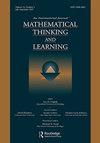Mathematical thinking about systems – students modeling a biometrics identity verification system
IF 1.5
4区 教育学
Q2 EDUCATION & EDUCATIONAL RESEARCH
引用次数: 2
Abstract
ABSTRACT The aim of this study is to understand how students’ mathematical thinking is activated and nurtured in solving a modeling problem, where the problem situation involves the design of a system. From a STEM integrated perspective, 9th grade students worked on a modeling task aiming to create an identification system based on hand biometrics. The theoretical framework proposes a conceptualization of the interplay between the mathematical modeling process, from a cognitive perspective, and the engineering design process. Central ideas refer to the cyclical nature of both processes and to the sub-processes involved in them. The empirical data were collected in two design-based research cycles with different 9th grade classes. The data from the groups’ audio and video recording and the students’ productions were analyzed under a directed qualitative content analysis informed by theory. The results showed a global pattern in the students’ thinking in solving a design system problem. The overlapping and interplay between the mathematical modeling and the design process was a prominent characteristic of students’ thinking. The modeling cycle was mirrored by a design cycle, with both running in parallel. System thinking pushed and drove students’ mathematical thinking, from the system requirements to the prototype validation.关于系统的数学思考——学生建模生物识别身份验证系统
摘要本研究的目的是了解学生的数学思维是如何在解决建模问题时被激活和培养的,其中问题情境涉及系统的设计。从STEM综合的角度来看,九年级的学生进行了一项建模任务,旨在创建一个基于手部生物特征的识别系统。该理论框架从认知的角度提出了数学建模过程和工程设计过程之间相互作用的概念。中心思想指的是这两个过程的周期性以及其中涉及的子过程。实证数据是在两个基于设计的研究周期中收集的,研究周期包括不同的九年级班级。在理论指导下,对小组录音录像和学生作品的数据进行了有针对性的定性内容分析。研究结果表明,学生在解决设计系统问题时的思维具有全局性。数学建模和设计过程之间的重叠和相互作用是学生思维的一个突出特点。建模周期由设计周期反映,两者并行运行。系统思维推动和驱动学生的数学思维,从系统需求到原型验证。
本文章由计算机程序翻译,如有差异,请以英文原文为准。
求助全文
约1分钟内获得全文
求助全文
来源期刊

Mathematical Thinking and Learning
EDUCATION & EDUCATIONAL RESEARCH-
CiteScore
4.40
自引率
6.20%
发文量
18
 求助内容:
求助内容: 应助结果提醒方式:
应助结果提醒方式:


